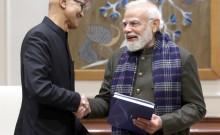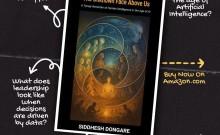
Transforming chaotic, siloed repositories into cohesive, actionable data ecosystems is the hallmark of Santosh Vinnakota's work as a distinguished data architect. Throughout his career, Santosh has guided organizations across industries through large scale cloud data modernization, earning peer recognized credibility and visible business impact.
His contributions to the field span from his thought leadership, such as hybrid data processing workflows and comparative analyses of Data Mesh versus Lakehouse architectures (link to the paper), to impactful real-world deployments. A pinnacle achievement at FedEx's MISA initiative saw him orchestrate a unified architecture that enabled real-time visibility into global customs clearance. The result: a 20 % reduction in customs delays and a 15 % improvement in compliance responsiveness.
Santosh's work also spans large-scale migrations, most notably transitioning over 3,000 disparate Teradata tables into a centralized Snowflake data warehouse. The migration slashed query latency by 60 % and cut infrastructure costs by 40 %. His optimization strategies at Cisco delivered yearly savings of $2.5 million, and a modular overhaul of ETL processes at Fox reduced pipeline failures by 30 %.
He puts it simply: "Siloed data is like fog, you know something's there, but you can't act decisively." His mission? Clearing that fog by architecting systems where data is visible, reliable, and aligned with business goals.
At Apple, Santosh shaped the DNA Platform for Apple Wallet analytics, standardizing pipelines and schemas to deliver insights 25 % faster to executives. He also unified TV and digital viewership in the Ad Insights platform, enhancing attribution and monetization outcomes.
Technically, Santosh excels at overcoming enterprise-scale barriers, legacy integration inconsistencies, fragmented schemas, and access control challenges by deploying metadata-driven schema mapping, semantic layers, and role-based access. He champions real-time ingestion tools like Azure Event Hubs and Delta Lake to boost data trustworthiness by removing reconciliation delays.
But the secret to his success is not just in architecture, it's in leadership. Santosh fosters confidence through pilot programs that deliver early wins and by engaging stakeholders collaboratively. "It's about building belief, not just architecture," he stresses.
His insights are widely shared in peer-reviewed publications, covering topics ranging from AI-assisted data lineage to best practices in declarative schema modeling. And as he points to the road ahead, a few trends stand out: composable architectures replacing monoliths, the rise of contractual data standards with observability, and AI-driven lineage and quality tracking.
"Manual debugging and chasing lineage through wikis and tribal knowledge is unsustainable," he warns. Santosh envisions AI systems capable of tracing, detecting, and auto-resolving data issues with production-level confidence.
Looking forward, he advises organizations to invest early in semantic modeling and metric standardization. "Without a shared understanding of what data means, insights become fragmented and misaligned." Federated governance, where teams retain domain ownership yet adhere to unified standards, strike the perfect balance between innovation and control.
In an era where business agility hinges on data fluency, Santosh Vinnakota offers not only technical finesse but a strategic blueprint: unifying data to drive trust, insight, and competitive advantage. "We're not just adapting to change," he affirms, "we're designing it."









